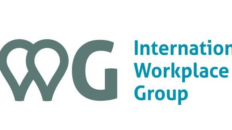Kuala Lumpur, December 12, 2024 – The Mastercard Economics Institute (MEI) has unveiled its 2025 economic outlook, predicting robust growth for Malaysia and a continued upward trajectory for Asia Pacific (APAC). The region is expected to achieve GDP growth in line with 2024 levels, while easing inflation and lower interest rates provide relief to consumers. Globally, economic growth is projected at 3.2%, a slight improvement from 3.1% in 2024.
Malaysia is positioned to outperform regional peers with an anticipated 4.7% GDP growth in 2025. The surge is attributed to a strong labor market and rising investments, particularly in higher-skilled, white-collar services. Enhanced employment opportunities and rising wages are expected to boost household purchasing power, driving private consumption—a key pillar of growth.
Malaysia’s economic growth in 2025 will be underpinned by improving consumer confidence and greater spending power, particularly on discretionary items,” noted David Mann, Chief Economist, Asia Pacific, Mastercard.
Asia Pacific Economic Highlights
Resilient Growth and Consumer Spending
The APAC region will continue to experience tight labor markets, with inflation-adjusted wages catching up, fueling discretionary spending on items such as electronics, furniture, and travel. Notably, travel demand across the region remains strong, despite total passenger numbers still trailing 2019 levels by 12%.
Key trends in APAC include:
India: The region’s fastest-growing economy, with 6.6% GDP growth expected, driven by a rising middle class and investments.
China: Stabilizing at 4.5% growth, supported by government stimulus and pro-growth policies.
Japan: Persistent inflation volatility and a weak yen are fueling a boom in luxury spending and tourism.
Australia, New Zealand, and Singapore: Easing inflationary pressures and monetary policy adjustments are expected to provide relief.
Emerging Trends in Consumer Behavior
Travel “Twins” and Affordable Alternatives
MEI identified shifts in travel patterns, with consumers gravitating toward cost-effective destinations, or “travel twins.” For example, Lombok is emerging as an alternative to Bali, while Fukuoka offers a Tokyo-like experience with fewer crowds and costs.
The “SHEconomy”
Women’s labor force participation has surged post-pandemic, exceeding pre-2019 levels in most economies. In India, participation among women aged 25-54 rose by 12 percentage points, signaling broader inclusion in the workforce.
Migration and Remittances
Outbound migration continues to support low- and middle-income households in countries like the Philippines and Pakistan, where remittances remain vital.
Policy Watch: Balancing Growth and Challenges
While easing inflation and stable monetary policies provide optimism, potential challenges include:
Japan’s Rate Hikes: Interest rate increases could counter inflation but may also slow growth.
Trade Disruptions: U.S. tariffs and other geopolitical factors could impact intra-regional trade.
2025 will be about normalization as volatility subsides and consumers benefit from economic recovery,” said Mann. “However, businesses should prepare for potential shocks, including trade disruptions or geopolitical developments.”








